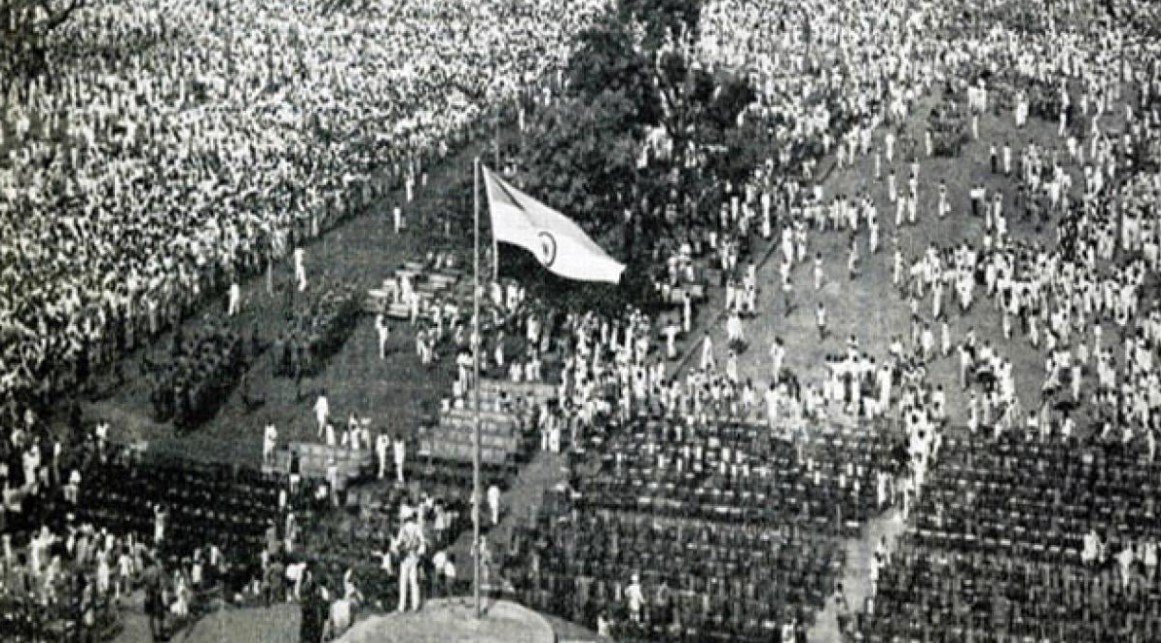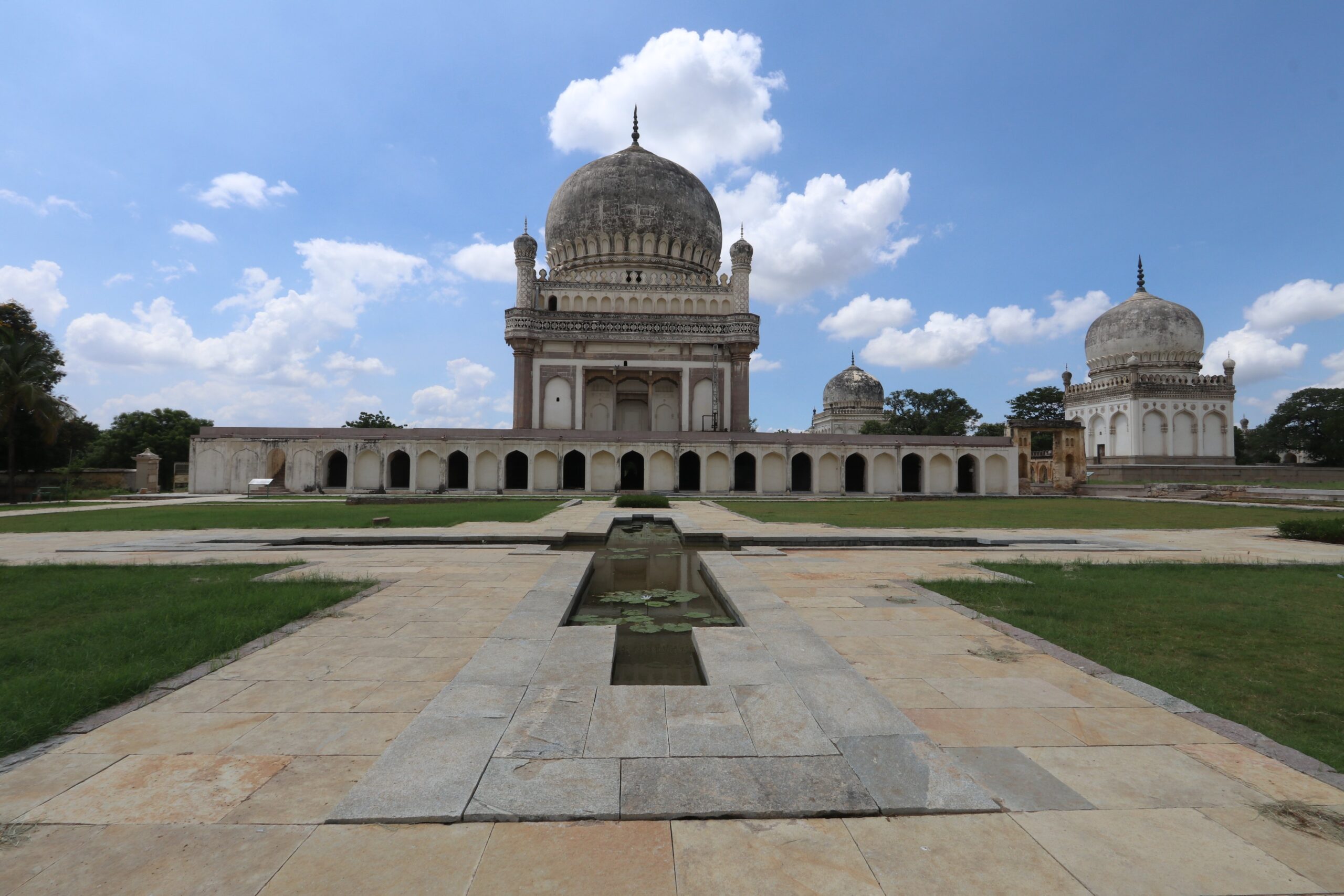India is home to the second-largest Muslim Population in the World. There are more than 3,00,000 mosques in India. The advent of Islam in India shaped the architectural technique of the land as a blend of two styles. Known as Indo-Islamic architecture, it was largely influenced by the composite culture which was the result of contact, intermixing, and assimilation of the cultural tradition of India and the Islamic world during the medieval period. Here are the 10 historical mosques that are excellent examples of Indo-Islamic architecture and cultural integration:
- Jama Masjid, Delhi
Built by the orders of the Mughal Emperor Shah Jahan, it is the principal mosque for Muslims situated in Old Delhi. With three great gates, four towers, and two 40 m-high minarets, the mosque is oriented in the direction of the holy city of Mecca, Saudi Arabia. It is built from red sandstone and white marble which showcase an excellent example of Indo-Islamic architectural style.


2. Taj – ul – Masjid, Bhopal
TheTaj–ul–Masjid which means “the crown of Mosques” in the city of Bhopal is the largest mosque in India. The structure is surrounded by three beautiful waterbodies namely: Munshi Hussain Talab; Noor Mahal Talab; and Motia Talab. Made up of red sandstone, it has the capacity to hold 175,000 people at a time.

3. Mecca Masjid, Hyderabad
The primary mosque of the old city of Hyderabad, Mecca Masjid is a state-protected monument. Muhammad Qutb Shah of the Qutb Shahi dynasty of Golkonda who founded the city of Hyderabad commissioned the bricks to be made from the soil brought from Mecca to be used in the construction of the central arch of the mosque. Mecca is the holiest site of Islam, thus giving the mosque its name. It has a large capacity of 10,000 people.

4. Asafi Mosque/Bara Imambara, Lucknow
The Asfi Imambara or Bara Imambara (Bada Iamambada) in Lucknow was built by Asaf-ud-Daula, Nawab of Awadh in 1784-1785. Bara means big, and an Imambara is a shrine built by Muslims for the purpose of Azadari. The complex includes the large Asfi mosque, the Bhulbhulayah (the labyrinth), and a Bowli, a step well with running water. There are two imposing gateways that lead to the main hall.

5. Jamali-Kamali Mosque, Delhi
Jamali Kamali Mosque and Tomb is located in the Archaeological Village complex in Mehrauli, New Delhi. It is situated near the Qutub Minar. This archaeological site comprises two monuments adjacent to each other. One is the mosque and the other one is the tomb of Jamali and Kamali. Their names are tagged together as “Jamali Kamali” for the mosque as well as the tomb since they are buried adjacent to each other. The mosque and the tomb were constructed in 1528–1529, and Jamali was buried in the tomb after his death in 1535.

6. Jamia Masjid, Sri Nagar
Jamia Masjid is Situated at Nowhatta in the middle of the Old City of Srinagar. The mosque was commissioned by Sultan Sikandar in 1394 and completed in 1402 at the behest of Mir Mohammad Hamadani, son of Mir Sayyid Ali Hamadani. It is considered one of the most important mosques in Kashmir. The architectural style of the mosque is highly inspired by the Indo-Saracenic style of architecture, and also shows similarity with the Buddhist pagodas.

7. Nagina Masjid, Agra
Nagina Masjid was built by one of the most famous patronages of Islamic architecture, Shah Jahan in the Agra Fort. Nagina Masjid means ‘the Gem Mosque’ or ‘the Jewel Mosque.’ This beautiful site is built from pure white marble. It was used by the ladies of the Harem with the court. The luxurious Mina Bazar was functioning down the road from where royal ladies could purchase items standing on the balcony of Nagina Masjid.

8. Adhai Din Ka Jhonpra
Adhai Din Ka Jhonpra is one the oldest surviving monument in India. Built by Qutub-ud-Din-Aibak, the first Sultan of Delhi in AD 1199, this historical site is situated in the city of Ajmer in Rajasthan, India. There is a saying that this architectural monument was built only in 2 and half days, and that is the reason behind its name.

9. Jama Masjid, Agra
The Jama Masjid, situated in the core of Agra city was built by Jahan Ara Begum, daughter of Mughal emperor Shah Jahan. Build with red sandstone and white marble this mosque is also known as ‘Friday Mosque.’ The interior walls of the monument have scriptures praising Shah Jahan and Jahan Ara in the Persian style. The Tomb of Salim Chisti is also a part of the mosque complex.

10. Hazratbal Mosque, Srinagar
Hazratbal Mosque also known as Dargah Sharif (“the Holy Shrine”), is a Muslim shrine located in Hazratbal, Srinagar in Jammu and Kashmir, India. This mosque is also known as Assar-e-Sharief, or, Madinat-us-Sani. It contains a relic, the Moi-e-Muqqadas, which is widely believed to be the hair of the Islamic prophet Muhammad. It is situated on the northern bank of the Dal Lake in Srinagar and is considered Kashmir’s holiest Muslim shrine.





